prophet muhammad

The high school I went to, on Long Island, taught me a lot about race. I learned about overt racism, and what we now call microaggressions.
Over a quarter of a century later, I am under no delusions that we live in a post-racial society.
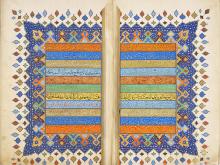
The exhibit is not intended as commentary on today’s politics, its organizers said. Work started on the project six years ago, before sharp rises in Islamophobic rhetoric and violence in the U.S. and Europe, and before Muslim immigration and culture became a flashpoint in American and European politics.
But the Smithsonian is not sorry for the timing, and hopes the exhibit can help quell fears of Islam and its followers.
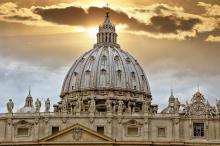
The Vatican’s semiofficial newspaper blasted a series of cartoons of Islam’s Prophet Muhammad as “blasphemous” but also condemned the “mad and bloodthirsty” extremists who opened fire at a Texas exhibit of the cartoons.
The front page article in L’Osservatore Romano likened the exhibit in Garland, Texas, to pouring “gasoline on the fire” of religious sensitivities and was critical of its sponsors, the American Freedom Defense Initiative, and professional provocateur Pamela Geller.
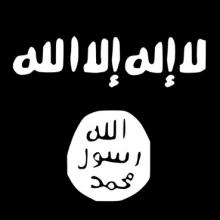
The Islamic State claimed responsibility May 5 for the attack outside a Texas art show showcasing cartoon depictions of the Prophet Muhammad.
A statement read in a bulletin on the group’s Al Bayan radio station said “two soldiers of the caliphate” carried out Sunday’s attack, the jihadist monitoring service SITE Intel Group said.
The statement from the group, also known as ISIS and ISIL, said: “We tell … America that what is coming will be more grievous and more bitter and you will see from the soldiers of the Caliphate what will harm you, God willing,” the Associated Press reported.
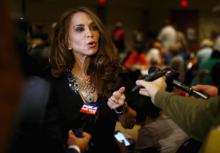
Pamela Geller is good at getting attention.
She’s a celebrity blogger and fiery activist who founded the American Freedom Defense Initiative, which describes itself as a human rights organization that defends freedom of speech by speaking out against global jihad and Islamic supremacists. She runs a sister organization called Stop Islamization of America.
The groups are known for controversial activism against Islam.
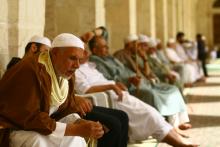
On May 3 in Garland, Texas, two gunmen opened fire at a “draw the Prophet Muhammad” contest sponsored by the American Freedom Defense Initiative, listed as an extremist group by the Southern Poverty Law Center. Police shot and killed the two gunmen. A security guard was injured. Most Muslims consider images of the prophet highly offensive, as Islam prohibits them. The attack comes almost four months to the day that four cartoonists at the French weekly Charlie Hebdo were killed by extremists offended at the magazine’s satirical depictions of the prophet.
Why do images of the founder of Islam — even cartoons drawn by amateurs — incite so much anger in some people that they are motivated to violence?

Most Americans who know about the deadly attack on the Paris headquarters of the satirical Charlie Hebdo magazine say it’s OK that the weekly featured cartoons of the Prophet Muhammad.
A new survey from the Pew Research Center shows 76 percent of Americans know of the Jan. 7 attack, and among this group 60 percent of Americans support the magazine’s right to publish these controversial images, while 28 percent disapprove.
However, one in four Americans overall offered no opinion because, they said, they had not heard about the violent attack where 10 artists and writers and two policemen were murdered.
The survey of 1,003 U.S. adults was conducted Jan. 22-25, two weeks after the attack. It has a margin of error of plus or minus 4.7 percentage points in the portion of the report that deals only with those who said they had heard about the incident.
The survey looked more closely to see how members of this group explained their views.

LAST YEAR, as I was unpacking my son’s school backpack, I found the children’s book on the Prophet Muhammad that my wife and I read to him at night. He had brought it to school without telling us. “It was for show and tell,” he explained to me.
You might think that my first reaction would be happiness. One of my goals as a Muslim parent is to help my kids feel connected to their faith. Clearly my son felt close enough to his religion to bring a book on the Prophet to share with his class.
What I actually felt was a shock of fear shoot down my spine. It was an immediate, visceral reaction. A whole slew of questions raced through my head. What did his teacher think of Muslims? What about his classmates? Would somebody say something ugly or bigoted about Islam during my son’s presentation? Would his first taste of Islamophobia come at the age of 5 during show-and-tell?
My fear at that moment is one small window into what it feels like to be a Muslim-American parent at a time when Muslim extremism is on prominent display and Islamophobia in America continues to spread.
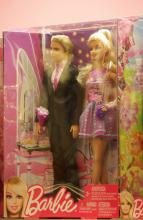
Barbie has had a number of careers in her 55 years — flight attendant, veterinarian, astronaut, even president. Her latest role, however, is raising eyebrows.
Italy’s Catholic bishops are furious about controversial artistic depictions of the popular Barbie and Ken dolls as the Virgin Mary and a crucified Jesus Christ and other saints.
Two Argentinian artists, Marianela Perelli and Pool Paolini, produced 33 dolls of various religious figures for a show named “Barbie, The Plastic Religion,” which opens in Buenos Aires on Oct. 11.
SIR, an Italian website backed by the Italian bishops conference, denounced the controversial toys in an editorial, which asks: ” What is the difference between provocation and bad taste?”
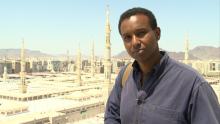
He’s born poor. By age 6, he’s an orphan. Two years later, he loses his grandfather. Yet he overcomes his circumstances, develops a reputation for business integrity and progressive views on marriage.
Then he becomes a prophet of God.
The portrait of the Muslim prophet, which emerges from a PBS documentary “Life of Muhammad,” may surprise some American viewers.

North Carolina lawmakers on Wednesday approved a bill to prohibit judges from considering “foreign laws” in their decisions, but nearly everyone agrees that “foreign laws” really means Shariah, or Islamic law.
North Carolina now joins six other states — Oklahoma, Arizona, Kansas, Louisiana, South Dakota, and Tennessee — to pass a “foreign laws” bill. A similar bill passed in Missouri, but Gov. Jay Nixon vetoed it, citing threats to international adoptions.
The bills all cite “foreign laws” because two federal courts have ruled that singling out Shariah — as Oklahoma voters originally did in 2010 — is unconstitutional.
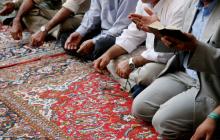
The variation in the proper way to pray is one among several differences that exist between Shiites, who make up about 15 percent of Muslims globally and in America, and the majority of Sunnis. Until recently, those differences mattered little in the United States, where the two groups bonded as Muslim minorities and prayed in the same mosques.
"There weren't enough of either to justify the cost of building sectarian mosques, and because in general, early generation immigrants were less focused on establishing formal houses of worship," said Andrea Stanton, a religious studies professor at the University of Denver.
That is changing, however, as American Shiites are increasingly establishing their own mosques. According to "The American Mosque 2011," a survey sponsored by several Muslim American organizations, 7 percent of roughly 2,100 mosques in America are Shiite, and most have been built in the last 20 years.
One reason: Shiites have become numerous and financially strong enough to manage the expensive process of buying or building their own mosques. Another factor: the growth in Shiite populations as immigrants flee persecution in Iraq, Bahrain, Saudi Arabia, Afghanistan, and Pakistan, where Taliban gunmen recently executed at least 22 Shiite bus passengers.
Ten days after 9/11, Rais Bhuiyan, an immigrant from Bangladesh, was working at a gas station in Dallas, Texas when a man walked in with a gun. Thinking the store was being robbed, Bhuiyan opened the cash register